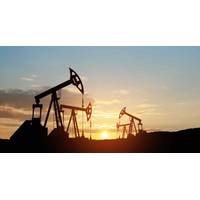Around-the-clock Cleanup Effort on Oil-fouled California Beach
Cleanup teams labored on Thursday for a third day to remove patches of crude petroleum that stained a California beach and fouled offshore waters from a pipeline rupture that may rank as the biggest oil spill to hit the Santa Barbara coastline in more than four decades.
Working around the clock, about 300 people on the beach were scooping up globs of oil from the sand and raking tar balls. Crews will also scrub soiled rocks and hose down contaminated areas, Coast Guard Captain Jennifer Williams said.
Nine cleanup vessels plied the ocean, six to corral the slick with booms and three others skimming oil from the surface.
Refugio State Beach and El Capitan State Beach, both popular seaside camping destinations, were to remain closed to the public through the Memorial Day holiday weekend. The area was also closed to fishing and shellfish harvesting.
Tuesday's rupture released as much as 2,500 barrels (105,000 gallons) of crude oil, five times more than the initial estimate, according to a "worst-case scenario" presented by pipeline owner Plains All American Pipeline. It said up to a fifth of the spill had reached the ocean.
The 24-inch-wide (61-cm-wide) pipeline, which runs underground parallel to a coastal highway west of Santa Barbara, inexplicably burst on Tuesday morning, belching crude oil down a canyon, under a culvert and onto Refugio State Beach before it flowed into the Pacific, U.S. Coast Guard officials said.
Plains Chief Executive Officer Greg Armstrong said control-room operators detected pipeline pressure irregularities on Tuesday morning, and the line was shut off in about 30 minutes.
The company said residual oil continued to drain after the shutdown. The spill was discovered about an hour later, when people in the area noticed a petrochemical odor and alerted authorities, officials said.
By Wednesday, a 4-mile (6-km) stretch of beach was blackened, and an oil slick spanned more than 9 miles (14 km) of ocean, the Coast Guard said.
Tuesday's accident pales in comparison with a 1969 offshore well blowout into the Santa Barbara Channel that released an estimated 80,000 to 100,000 barrels of oil and stands as the largest spill ever in California waters.
Officials said Tuesday's oil spill, if Plains' estimates hold up, likely ranks as the biggest along the Southern California coast since the 1969 blowout, which killed thousands of sea birds and other wildlife and helped spark the modern U.S. environmental movement.
Sensitive Nesting Sites
Governor Jerry Brown issued an emergency proclamation on Wednesday to speed cleanup resources to the scene.
The spill zone lies at the edge of a national marine sanctuary and state-designated underwater preserve that is home to 25 marine mammal species and 60 species of sea birds. But the Santa Barbara Channel and surrounding waters are also dotted with nearly two dozen oil platforms and hundreds of wells.
Wildlife teams were dispatched to rescue any animals injured by the spill. Authorities said they did not know the extent of wildlife harm, but photos showed oil-covered pelicans and other sea life washed ashore.
Crews focused on three especially sensitive nesting areas for shore birds, including snowy plovers and least terns, said a state Fish and Wildlife Department spokeswoman.
The pipeline that burst on Tuesday typically carries about 1,200 barrels of oil an hour from an Exxon Mobil Corp processing facility to a distribution hub in Bakersfield hundreds of miles away, company and county officials said.
The company said it had inspected the pipeline a few weeks ago, but results had not yet come back.
(By Alan Devall, Writing by Steve Gorman)


